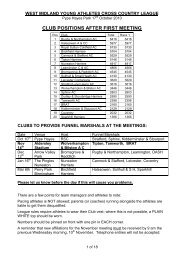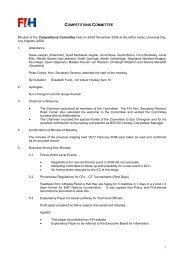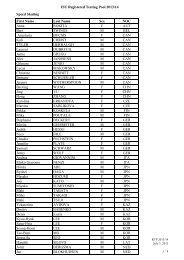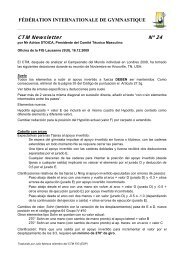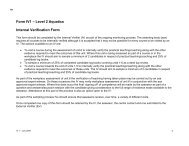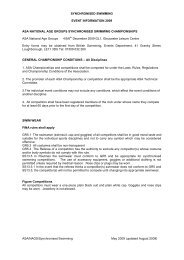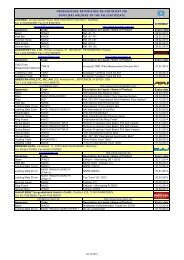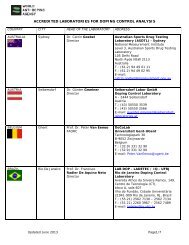Olympic Media Guide 5/8/04 - sportcentric
Olympic Media Guide 5/8/04 - sportcentric
Olympic Media Guide 5/8/04 - sportcentric
- No tags were found...
Create successful ePaper yourself
Turn your PDF publications into a flip-book with our unique Google optimized e-Paper software.
NEWCOMER’S GUIDE TO DIVINGThe complexity of the dive is taken care of by its rating or difficulty, ranging from 1.2 for the easiest dive to 3.8or more.Flawless execution will include strong initiation into the dive and vertical entry into the water without splash. Diverscall this a “rip” entry. Between these parts of the dive the body will be carried in what are known as “positions”.These are the straight position (no bending at the hips or the knees), piked position (bending at the hips but notat the knees) or tucked position (body bunched up tightly, with the hands on the lower legs).Feet must always be together and toes pointed. Sometimes the announcer speaks of the “free position” whichimplies some twisting combined with one or more, usually at least two, of the other positions.The judge may award 1 to 10 points in half stage points. A table of the scores and how they should be awardedis as follows:Very good 8.5 - 10Good 6.5 - 8Satisfactory 5 – 6Deficient 2.5 – 4.5Unsatisfactory 0.5 – 2Completely failed 0The highest and lowest awards are discarded and the sum of the remainders multiplied by the degree of difficultyto give the points scored. For example, if a dive with a difficulty rating of 2.0 is awarded 4, 5, 5, 5, 6 the four andsix are discarded and the sum of the scores is multiplied by 2.0 to give a total of 30 points.Competition dives are performed from springboards set at 1metre or 3m above the water, or from the 5m, 7.5mor 10m platforms. The number of dives varies from one competition to another.69



